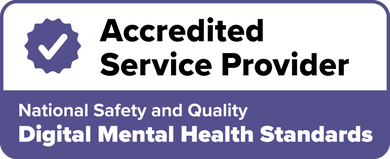How to safely leave a toxic relationship (and rebuild your self-worth)
In a Nutshell
Gaslighting, abuse, emotional unavailability, narcissistic behaviour, and chronic cheating are some of the common signs of a toxic relationship.
It can be hard to recognise and acknowledge that you’re in a toxic relationship, especially when you’ve already poured so much time, effort, and emotions into it.
While leaving any relationship can feel difficult and scary, staying in a toxic dynamic can be deeply damaging to your wellbeing and self-worth.
Toxic relationships often begin as a loving, seemingly safe relationship. Toxic traits unravel slowly, often causing confusion, emotional chaos, and a push-and-pull dynamic.
Toxic relationships are also rarely one-sided. Both partners could have toxic traits, or they developed these traits in response to the repetitive cycle of mental and emotional chaos in their relationship.
If you are beginning to see the toxic patterns with your partner and are preparing to step into a healthier, more peaceful chapter, we hope this article will help guide you.
Recognising the signs of a toxic relationship
Toxic relationships can be difficult to identify because they don’t always look the same. For some, toxicity begins with love bombing: grand gestures, constant attention, and declarations of a perfect future, followed by withdrawal or criticism once the connection feels secure.
For others, it may be a partner who treats friends, colleagues, or strangers with kindness yet becomes distant, dismissive, or unkind at home. Some partners never show physical aggression but cause deep harm through emotional abuse, belittling remarks, or shutting down when you try to express what hurts you.
Here are some common signs to look for:
Gaslighting: Your partner repeatedly denies your experiences or memories, telling you that you are too sensitive or that your experience never happened, which leaves you questioning your own reality.
Narcissistic behaviours: They are self-centred, avoid accountability, and lack empathy. They may appear warm and charismatic in public while being emotionally cold or critical in private.
Emotional unavailability: They pull away when you seek comfort, avoid sharing their feelings, or disregard your emotional needs.
Stonewalling: They shut down or refuse to engage in important conversations, especially when their behaviour is the issue. This unwillingness to address unhealthy patterns prevents resolution and keeps the cycle going.
Constant criticism or put-downs: Nothing you do seems good enough, and they may use sarcasm, name-calling, or public embarrassment to undermine you.
Controlling behaviour: They monitor your time, distance you from loved ones, or attempt to control your choices and independence.
Trauma bonding: The relationship follows a repeated cycle of intense affection and hurtful behaviour, keeping you hopeful for change while leaving you trapped in distress.
Related: Healing from emotional neglect
The cost of staying too long
Remaining in a toxic relationship can quietly but profoundly wear down your mental and emotional wellbeing. The constant tension, criticism, or dismissal chips away at your self-esteem, while the emotional highs and lows can consume so much energy that there is little left to nurture yourself or other parts of your life.
Over time, you may begin to question your worth, doubt your instincts, and lose confidence in your ability to make sound decisions. Feelings of anxiety, emotional exhaustion, and disconnection from the person you once were can become an everyday reality.
If there are children involved, they may also absorb the conflict and instability, shaping how they view relationships and what they accept as love. So while leaving can feel like the most difficult thing right now, staying longer can cause deeper and longer-lasting wounds, alongside a sense of inability to feel happy and safe.
How to leave a toxic relationship
Depending on the complexity of your situation, you may leave instantly or with a careful plan. Here’s a guide to support you:
1. Acknowledge the reality
Begin by honestly recognising the behaviours you have experienced. Denial or finding ways to justify your partner’s actions may have felt protective in the past, but facing the truth is what opens the door to change and healing.
2. Plan for safety
If your partner is volatile or controlling, choose a time to leave when they are not present. Have a trusted person on standby or nearby. In unsafe situations, it’s a must to contact a domestic violence service before taking action.
3. Secure essential documents and necessities
Quietly collect IDs, financial records, prescriptions, and any other items you and your child may need, including school-related documents and comfort items.
4. Ask for emotional and practical support
Talk to someone you trust. Whether it’s a close friend or a counsellor, having someone to validate your experience can be transformative, especially if you’ve been gaslighted or emotionally manipulated.
5. Reassure and protect your child
If you have children, explain the situation in age-appropriate language, making it clear that they are loved and not to blame. Keep their daily routine as consistent as possible, as predictability can help them feel secure during change. Shield them from conflict, but also create space for them to share their thoughts and feelings without fear of judgment.
Once you are in a safer and more stable place, consider arranging sessions with a child therapist. Professional support can help children process what is happening, strengthen their emotional resilience, and reduce the risk of long-term effects from sudden transitions or traumatic experiences.
6. Set healthy boundaries for parenting
If your ex-partner continues toxic behaviours, consider structured approaches such as co-parenting or parallel parenting. Parallel parenting can help limit direct contact and reduce conflict by keeping communication minimal and focused solely on the child’s needs. Using written communication, such as email or a parenting app, can provide clarity and a record of interactions.
In unsafe or highly complicated situations, you may benefit from cutting off all contact or involving a family mediator, parenting coordinator, or government child contact service to manage arrangements. These professionals and services can create a more secure framework for parenting, helping protect both you and your child from ongoing conflict.
7. Protect your mental space
After leaving, create distance from the toxic dynamic. Set boundaries around communication. Block or limit contact where necessary, and focus on staying safe and reclaiming your peace and happiness.
Moving on from a toxic partner
Leaving is a major milestone, but healing takes time. You may grieve the person you hoped they would be or the future you imagined. You might also feel guilt, shame or loneliness, and this is a completely normal response.
It’s helpful to begin reconnecting with yourself by doing things that remind you of who you are. Take up a hobby, call a friend, go for a walk, or write down how you feel. These small acts can help make you feel more grounded at the same time rebuild your sense of identity and control.
Therapy can help you untangle the effects of gaslighting and abuse. It can also teach you how to rebuild trust in yourself and set healthier boundaries in future relationships.
If you’re a parent, you can still create emotional stability for your children even without a supportive partner. You aren’t required to maintain a relationship that drains you, and you can show your children what healthy boundaries look like.
Leaving a toxic relationship can be the bravest decision you’ll ever make. You may not feel strong now, but one day at a time, one brave decision after another, you will slowly heal and feel alive again.
Get Support
Overcome your relationship issues and book a free video consultation with one of our therapists
Essential Reading about Relationship Issues
Relationship Counsellors Available Now
QLD
Psychologist
If you're feeling overwhelmed, anxious, stuck in your head, or disconnected from yourself, you're not alone. I'm Casey Barnard, a Psychologist and Health Coach who helps ...More
QLD
Psychologist
Hello! I am an experienced therapist with expertise to support you in overcoming challenges and reaching your goals and potential. I'd love to work with you or your fam...More
NSW
Counsellor
Hi, welcome, I support people who are struggling with a range of life challenges. This may be a situational issue or more ongoing challenges in life where you have noti...More








